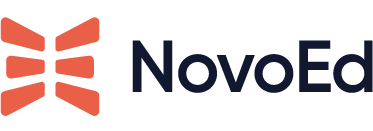ATD Blog
Which Comes First? Diversity or Inclusion?
Fri Jul 24 2020

Inclusive and diverse work environments positively affect the bottom line for businesses. Less clear is how to bring about the cultural and behavioral changes needed in the workplace for the benefits of diversity to emerge. While action is needed on diversity and inclusion initiatives, organizational learning and development plays a critical role in the cultivation of inclusive work cultures where diversity initiatives thrive.
Diversity Is Good for Business
The business results are in, and they’re conclusive: Diversity in the workplace leads to superior financial results. According to a 2017 McKinsey study, companies in the top quartile for gender diversity are 21 percent more likely to experience above-average profitability than companies in the fourth quartile. The results are even more pronounced for ethnic and cultural diversity: Companies with ethnically diverse management are 33 percent more likely to outperform others.
Companies have responded to the business imperative as well as to recent social and cultural pressures by committing to diverse hiring policies. Often overlooked, however, is that the benefits of diversity only emerge in inclusive work environments. In Harvard Business Review, Laura Sherbin and Ripa Rashid write, “In the context of the workplace, diversity equals representation. Without inclusion, however, the crucial connections that attract diverse talent, encourage their participation, foster innovation, and lead to business growth won’t happen.” At many companies, however, inclusion remains elusive. According to a study by BCG, diverse employees feel far less able than employees of majority groups to share their perspectives at work. Those who do share their views often feel their voices have not been heard.
Inclusion on the Dance Floor
Diversity advocate Vernā Myers expresses the difference between diversity and inclusion this way, “Diversity is being invited to the party: inclusion is being asked to dance.” At work, we all want to dance. BCG found that three-fourths of white men, the dominant group in business, agree that their perspectives at work matter and are listened to. That fraction drops precipitously for diverse workers.
If inclusion is not present, diversity efforts are doomed. Diverse employees are not listened to, are not promoted, and never get into the leadership positions where they can actively shape a company’s culture. There are no role models and no opportunities for networking and mentoring. Ultimately, the business itself suffers from the lack of effective problem solving and innovation that diverse workplace cultures bring. To avoid this downward spiral and to meet the social and business goals of diverse workplaces, companies need to pay equal, if not greater, attention to fostering inclusion at work.
Learning to Move Beyond Compliance
What’s required to reap the benefits of a diverse workforce is not simply a matter of tweaking hiring policies and benefits; it’s a wholesale change in culture to support a set of organizational values that center around inclusion. It represents a change in strategy, not tactics.
Leadership on issues of inclusion and diversity is critical in setting the direction for companies that aim to do good for all their stakeholders. The question remains of how to shift the aggregated attitudes and behaviors of thousands of workers quickly and at scale. Traditional check-the-box compliance training is unlikely to work. Remote work policies and physical distancing requirements have made in-person training impossible for the foreseeable future.
An effective alternative is to take advantage of the safety and scale of a collaborative learning platform. This type of learning environment provides a safe online space for discussion and collaboration among peers with various perspectives on racial, cultural, and gender differences, unconscious bias, and other important D&I topics. Learning experiences can heighten a sense of common purpose and drive impact through guidance from mentors, managers, and experts who model desired behaviors and attitudes, reinforce learning, and coach individuals and groups.
Download NovoEd’s Diversity for Innovation: The Guide to Developing D&I as an Organizational Capability e-book to learn more about how L&D can be a critical enabler of inclusive workplaces that promote fairness, recognition, and innovation.


